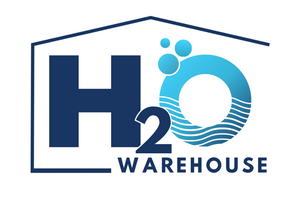Understanding Domestic Mains Water Leaks
Understanding Domestic Mains Water Leaks: Issues, Solutions, and Prevention
Welcome to H2O Warehouse, your trusted source for water products and solutions. In this article, we delve into the often-overlooked yet critical aspect of domestic mains water leaks. From understanding the common issues to exploring effective solutions and preventive measures, let's equip you with the knowledge to safeguard your property and conserve water efficiently.
Common Issues:
- Worn Out Pipes: Over time, the pipes carrying water to your home can degrade due to age, corrosion, or external factors like soil conditions. This degradation can lead to cracks, holes, or even bursts, resulting in leaks.
- High Water Pressure: Excessive water pressure within the mains system can strain the pipes, causing them to weaken and eventually leak. It's crucial to monitor and regulate water pressure to prevent such issues.
- Freezing Temperatures: In regions prone to freezing temperatures, water inside the pipes can freeze, expand, and cause the pipes to crack or burst. Thawing frozen pipes improperly can also lead to leaks.
- Poor Installation or Maintenance: Improper installation of pipes or negligence in maintenance can contribute to leaks over time. Seals may degrade, joints may loosen, and connections may weaken, all of which can result in water leakage.
Solutions:
- Regular Inspections: Conduct periodic inspections of your water mains and plumbing system. Look for signs of leaks such as damp patches, mould growth, or unusually high water bills. Early detection can prevent minor leaks from escalating into major issues.
- Professional Repairs: If you notice any signs of leaks or suspect a problem with your water mains, enlist the services of a qualified plumber. They can identify the source of the leak and perform the necessary repairs promptly and effectively.
- Pipe Replacement: In cases where the pipes are severely degraded or damaged, consider replacing them with newer, more durable materials. Modern options like PVC, copper, or PEX pipes offer greater longevity and resistance to corrosion.
- Pressure Regulation: Install pressure-reducing valves (PRVs) to regulate water pressure within the mains system. This helps alleviate strain on the pipes and reduces the risk of leaks caused by high water pressure.
- Insulation: In cold climates, insulate exposed pipes to protect them from freezing temperatures. Additionally, take preventive measures such as allowing faucets to drip during freezing weather to prevent water from stagnating and freezing inside the pipes.
Preventive Measures:
- Education and Awareness: Educate household members about water conservation practices and the importance of promptly reporting any signs of leaks or water wastage.
- Routine Maintenance: Implement a regular maintenance schedule for your plumbing system, including checking for leaks, inspecting seals and connections, and cleaning filters and aerators.
- Water Monitoring Devices: Invest in water monitoring devices or smart meters that can detect leaks and abnormal water usage patterns. These tools provide early warnings and help you take timely action to mitigate water loss.
- Landscaping Considerations: When landscaping your property, avoid planting trees or shrubs near water mains to prevent root intrusion, which can damage pipes and lead to leaks.
In conclusion, domestic mains water leaks pose significant challenges, but with vigilance, proactive maintenance, and the right preventive measures, you can minimise the risk of leaks and conserve water effectively. At H2O Warehouse, we're committed to providing you with the products and expertise you need to address water-related issues and create a sustainable future for your home.
- Choosing a selection results in a full page refresh.

